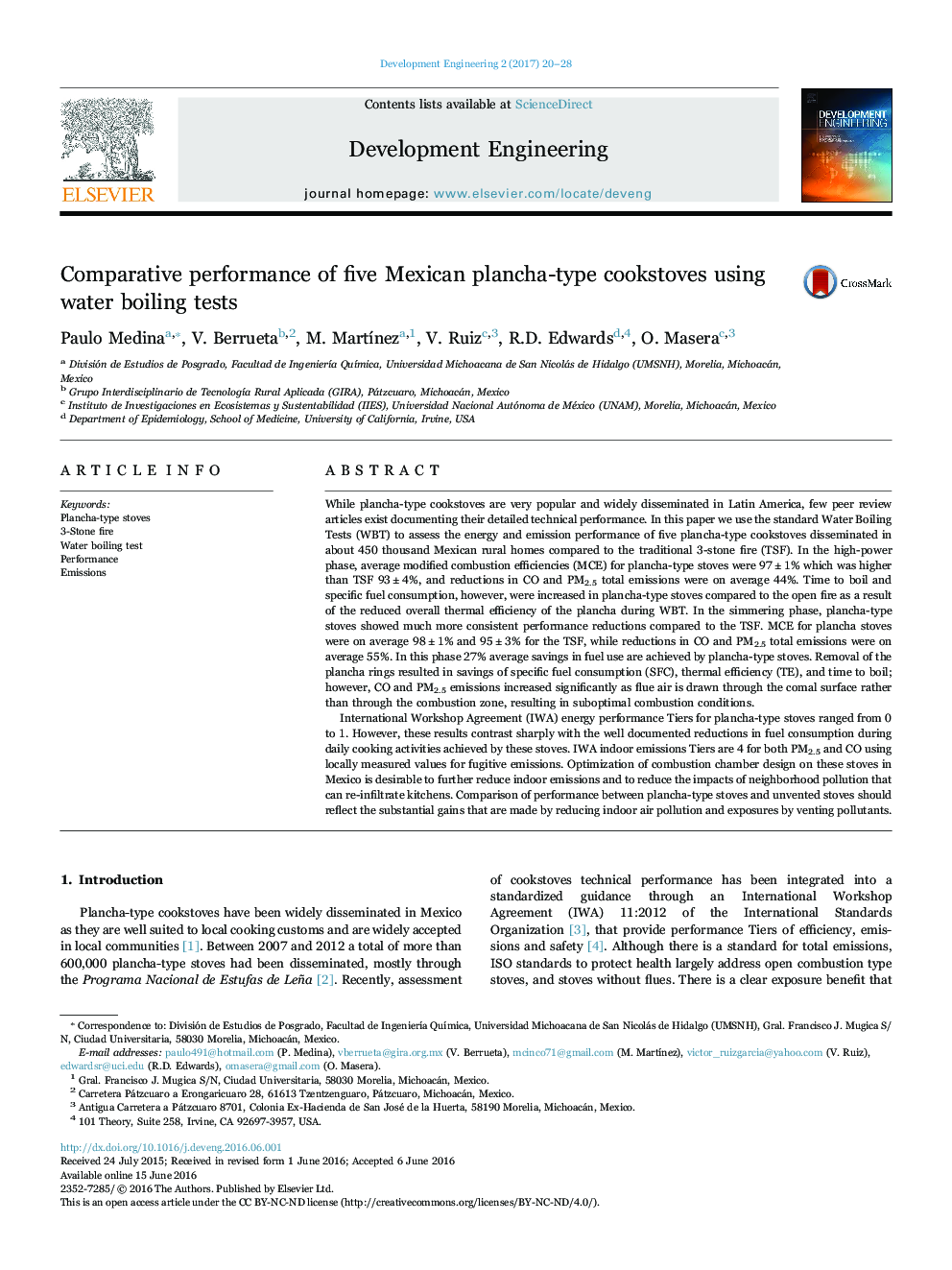| کد مقاله | کد نشریه | سال انتشار | مقاله انگلیسی | نسخه تمام متن |
|---|---|---|---|---|
| 5022603 | 1469675 | 2017 | 9 صفحه PDF | دانلود رایگان |
- Optimization of combustion chamber design on plancha stoves is desirable to further reduce emissions that can re-infiltrate.
- Plancha stoves had substantial improvements in emissions and fuel savings in the low-power with respect to high-power phases.
- Removal of the plancha rings resulted in energy gains, however, CO and PM2.5 emissions increased significantly.
- Chimney stoves reported substantial gains by reducing indoor air pollution and exposures by venting pollutants outside.
While plancha-type cookstoves are very popular and widely disseminated in Latin America, few peer review articles exist documenting their detailed technical performance. In this paper we use the standard Water Boiling Tests (WBT) to assess the energy and emission performance of five plancha-type cookstoves disseminated in about 450 thousand Mexican rural homes compared to the traditional 3-stone fire (TSF). In the high-power phase, average modified combustion efficiencies (MCE) for plancha-type stoves were 97±1% which was higher than TSF 93±4%, and reductions in CO and PM2.5 total emissions were on average 44%. Time to boil and specific fuel consumption, however, were increased in plancha-type stoves compared to the open fire as a result of the reduced overall thermal efficiency of the plancha during WBT. In the simmering phase, plancha-type stoves showed much more consistent performance reductions compared to the TSF. MCE for plancha stoves were on average 98±1% and 95±3% for the TSF, while reductions in CO and PM2.5 total emissions were on average 55%. In this phase 27% average savings in fuel use are achieved by plancha-type stoves. Removal of the plancha rings resulted in savings of specific fuel consumption (SFC), thermal efficiency (TE), and time to boil; however, CO and PM2.5 emissions increased significantly as flue air is drawn through the comal surface rather than through the combustion zone, resulting in suboptimal combustion conditions.International Workshop Agreement (IWA) energy performance Tiers for plancha-type stoves ranged from 0 to 1. However, these results contrast sharply with the well documented reductions in fuel consumption during daily cooking activities achieved by these stoves. IWA indoor emissions Tiers are 4 for both PM2.5 and CO using locally measured values for fugitive emissions. Optimization of combustion chamber design on these stoves in Mexico is desirable to further reduce indoor emissions and to reduce the impacts of neighborhood pollution that can re-infiltrate kitchens. Comparison of performance between plancha-type stoves and unvented stoves should reflect the substantial gains that are made by reducing indoor air pollution and exposures by venting pollutants.
Journal: Development Engineering - Volume 2, 2017, Pages 20-28
